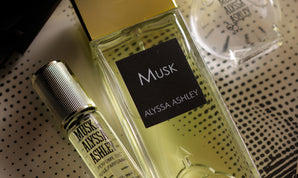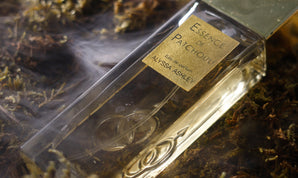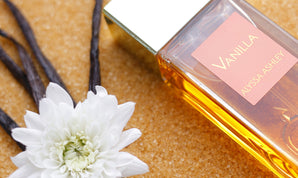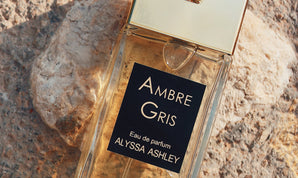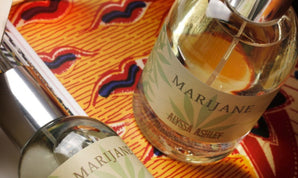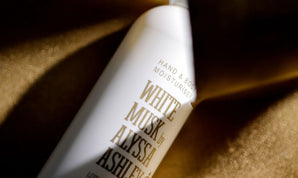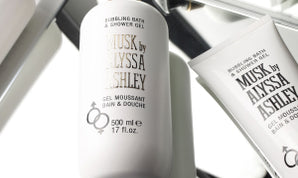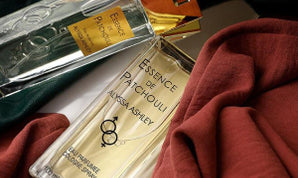A few days ago was March 8, the International Women's Day, more commonly referred to as "Women's Day".
In agreement with the Alyssa Ashley team I decided to publish this article throughout the month, without respecting a precise date.
A way to emphasize the concept that it’s always the right time to remember the achievements reached by women, whether their social, economic or political accomplishments.
Honouring them with a flower, with a kind and fragrant gesture, or just simply respecting them, should be done all year round.
It’s not the 8th of March without a wonderful tree, the acacia, with its inflorescence in the shape of small spheres of yellow, loved and loathed at the same time.
Poor mimosa, how can you hate a flower?
Perfumes were late to approach this note because with distillation, or through hydrodistillation, which were among the first known extraction methods, nothing good was obtained.
It was only in the 20th century, with the appearance of volatile solvents, that we could begin to use absolutes.
Jean Claude Ellena defined mimosa as "the winter sun".
The most commonly used species of acacia are: Decurrens and Dealbata, which give perfumery materials surprisingly different olfactory profiles.
Intense sweet tones with woody facets come from the aroma of mimosa absolute of the Decurrens species.
It has an olfactory profile that is distinctly spicy and rich in honeyed nuances. In the background, a pleasant reference to the always elegant violet flower, to green and herbal scents.
In order to obtain the actual essence, we don’t only use the flowers, but also:
- the leaves, with romantic shapes, reminiscent of the feathers of a peacock;
- the twigs, thin and veiny.
The raw material produced, after solvent extraction, turns into an absolute and takes on a yellow colour with a semi-solid consistency.
In a laboratory it’s quite complicated to turn into a liquid, some machineries, that we can define as stoves, enable this process of fluidification of the compound.
It is often used in floral or amber bases, even in cologne preparations.
Through its rainbow of facets, it livens up even the most boring aspects of some synthetics and stimulates natural materials in their most monotonous facets.
The aroma of mimosa absolute obtained from acacia of the Dealbata species is clearly more flowery and "fat", however it maintains woody and sweetly honeyed aspects.
The extraction in this case as well, has a yellow color, is in a solid form and looks like petrified caramel.
On todays’ market it’s possible to buy diluted products, from 20% to 30% of alcohol, they are more fluid and easily used in formulas.
Robertet, a prestigious essential oil company, famous for its precious naturals, produces, among other excellences, an exclusive raw material through Olessence.
A method of extraction that I would define as "soft", it uses low temperatures in order not to ruin the flowers as well as a natural solvent; Nerolidol.
This is a naturally occurring sesquiterpene found in many plant species.
The result is a colorless compound with a watery consistency, which is obtained not only from the flowers, but also from the leaves of the plant.
Olessence gives a raw material which is very close to the scent of the flower, without any kind of contamination.
In fact the aroma is fresh and delicate, with a powerful aniseed undertone, the same olfactory impressions we can feel when we put our nose on the nice and hairy yellow dots.
It’s a very useful component, because it gives liveliness to floral bouquets, excellent for the creation of apple notes and in gourmand compositions, needless to say it’s a pretty expensive element.
The so called replacers, and there are many of them, definitely cheaper in price, are substitutes of the natural scents.
It’s rare to find a predominant note of mimosa in perfumery, or even a soliflore.
However, I remember Amarige, a historic Givenchy perfume and Mimosa pour moi by Artisan Parfumeur, which I preferred to smell through the old bottle.
Among the recently released perfumes, Mimosa Tanneron by Perris Monte Carlo should certainly be brought up.
A brand which has long contributed to the creation of a sort of olfactory database of raw materials, a reference for everyone, thanks to its solinotes.
Perfumes focused on excellence among the notes of perfumery, obtained from the most varied extraction methods.
Let's clarify:
- The mimosa flower blooms from the acacia plant Dealbata or Decurrens;
- the mimosa plant (mimosa pudica) produces pink/purple flowers and is a different species.
